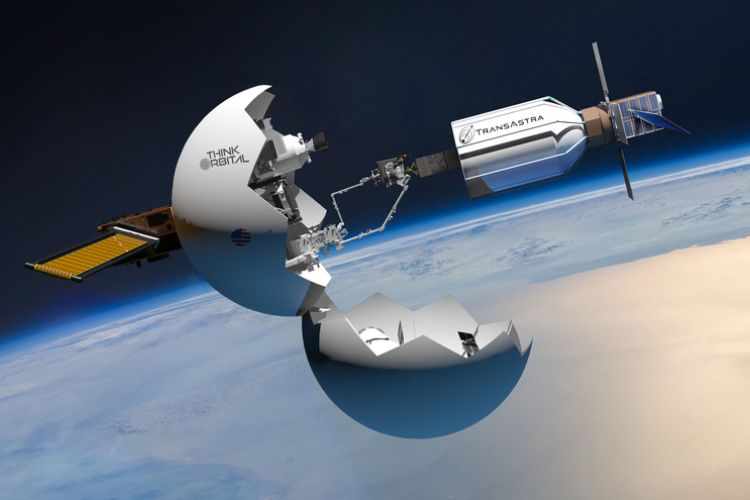
Our growing interest in the cosmos has been rewarded with fast-paced innovation and many more successful space missions. However, it has created a persistent problem that’s only growing every year. I’m talking about space debris. The Earth’s lower orbit, as it stands today, is crowded with defunct satellites, rocket stages, mission disaster remnants, and more. This has resulted in an increased collision between active mission elements and this “space junk,” creating a destructive cycle of more debris. To solve this issue, NASA is now joining hands with TransAstra to launch concept bags that will capture this space junk. Let’s learn what it is and how it will work.
TransAstra Wins NASA Space Junk Cleaning Contract
As part of its Phase 2 Small Business Innovation Research program, NASA has awarded US-based space logistics startup TransAstra with an exclusive contract worth $850,000 to clean space junk. Under this deal, the startup will build a specialized inflatable bag that will capture and safely transport the debris back to the surface of the Earth. This specially crafted contraption will travel to the lower orbit of Earth and then inflate using inflatable struts. But, before making an actual launch, the technology will be thoroughly tested and tried on the ground.
As reported by SpaceNews, the idea is built upon the capture bag technology that was prepared by NASA for its Asteroid Redirect Mission. In 2021, TransAstra presented a concept bag aided by NASA’s Innovative Advanced Concepts funding. These bags come in various shapes and sizes and can capture debris, ranging from defunct satellites to large rocket bodies. Upon successful capture, these struts will close creating an airtight seal.
Since the inflatable bag will remain constantly attached to a small spacecraft ferry, it will allow NASA and TransAstra to travel to different sections of the Earth’s orbit to ensure effective pickup and cleanup. Once the bag is full, a special propulsion mechanism will ensure that the spacecraft can make a successful reentry into the Earth’s orbit.
However, this by no means will be an easy feat. As TransAstra’s CEO Joel Sercel said, since the debris is constantly moving around and is not static in nature, it will have to match the debris’ spinning speed to some extent to ensure the capture bag can grab it. Their special bag will then undertake a precision maneuver to “open the bag, get the bag around the debris, and then close the bag.”
He further added that the entire act will be like collecting “fired bullets.” Also, the entire act of going into space, capturing space debris, and then re-entering the Earth’s orbit to bring it back is extremely fuel-intensive. Hence, the inflatable bag will try to capture as much junk as possible during its journeys.
Currently, this is still by large in its experimental stage. The space junk problem is real and growing, so it will be interesting to see how this partnership proves useful in cleaning the cosmos of man-made debris. With that said, what do you think of this initiative from NASA and TransAstra? Do you think it can come to fruition? Share your thoughts in the comments below.
The reentry into Earth orbit is a short sighted one. We have to gather that trash for recycling IN orbit. Why not built a recycling plant or shipyard station in space? We need men and women up there guiding sweepers around and bringing them into recycling on a constant basis. This problem can be ameliorated, but not conquered without a full-time working process. Bringing it back to earth means that any collecting unit must be rocketed back up again. That is way too time intensive even for Space X to fool with.
Still, something must be done.
Kudos to NASA for brave initiative
I think it will work it will be the 1st step in cleaning up space junk. Its about time something has been done.
I don’t think so